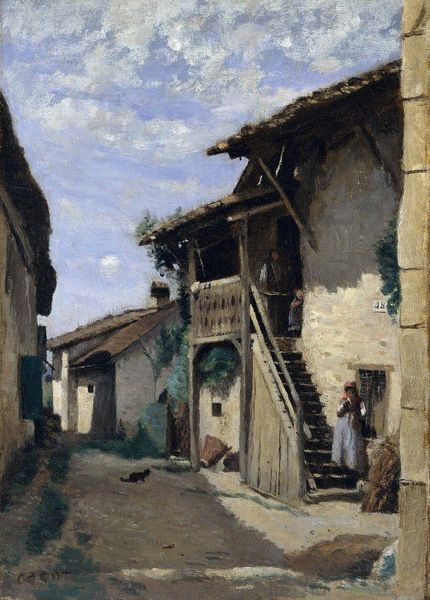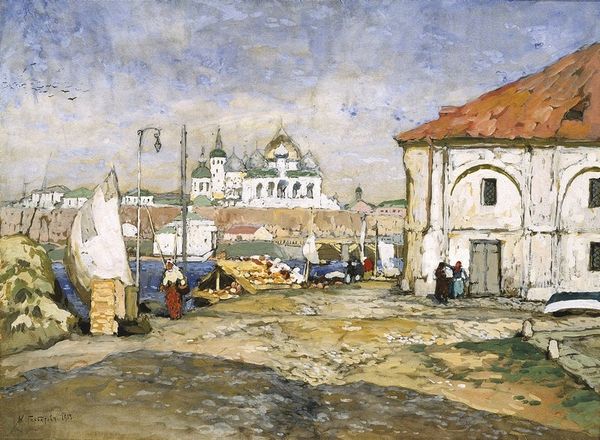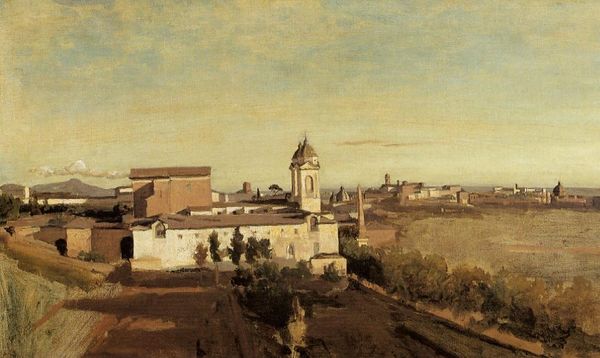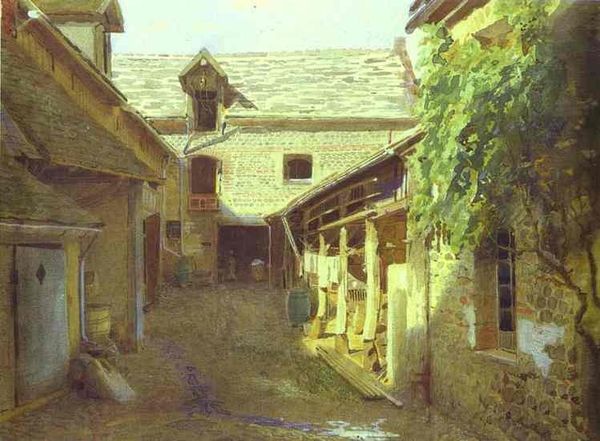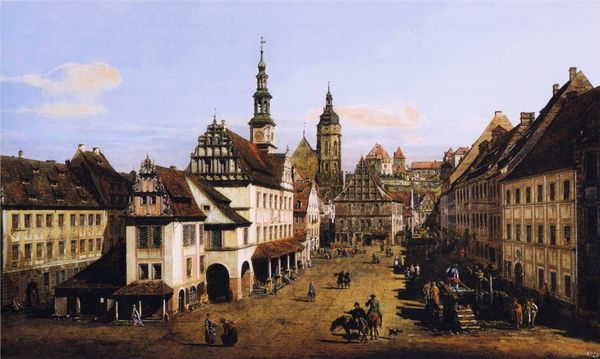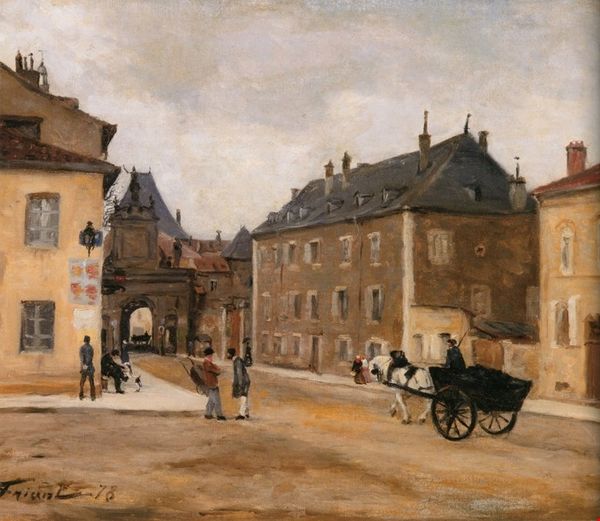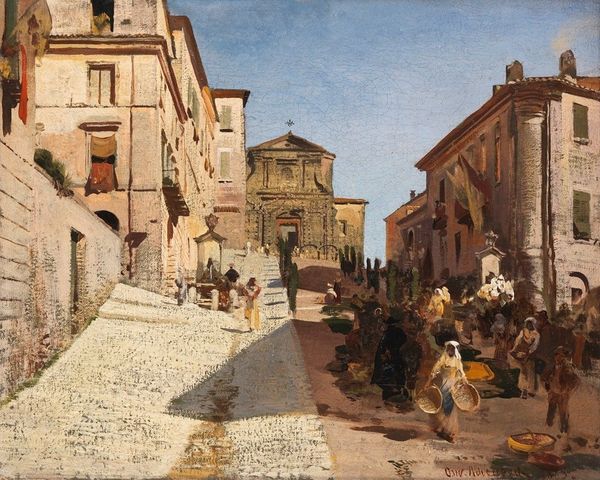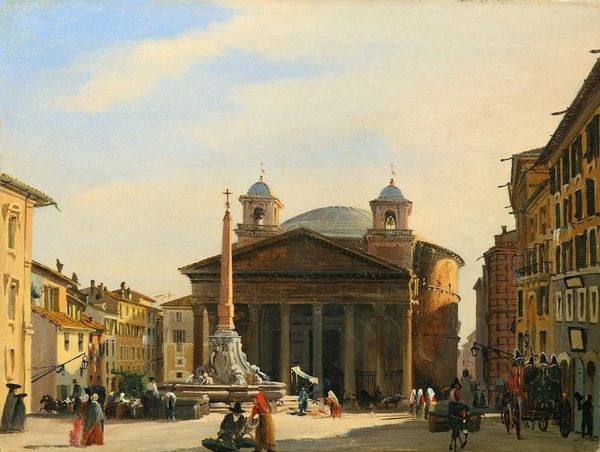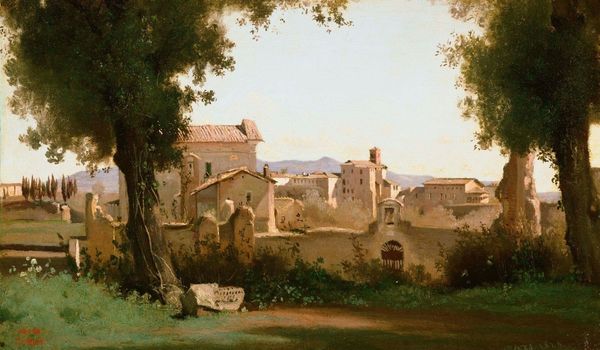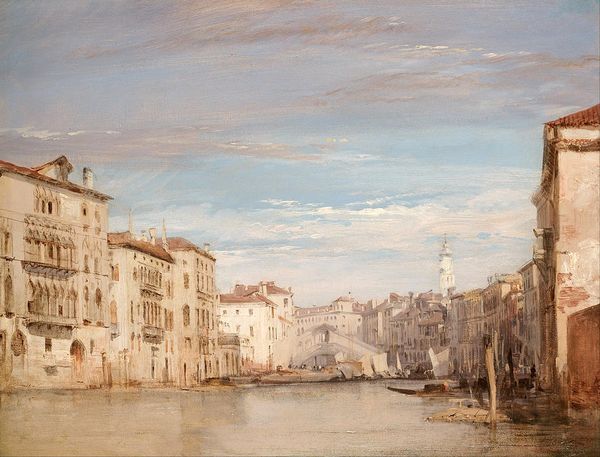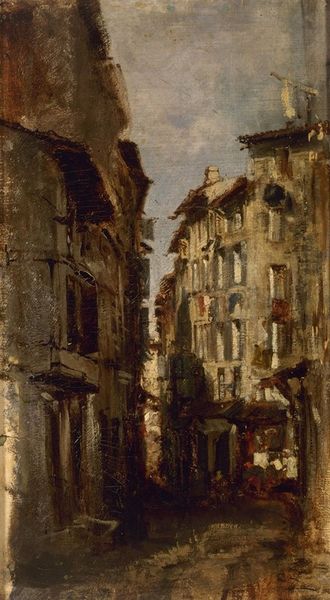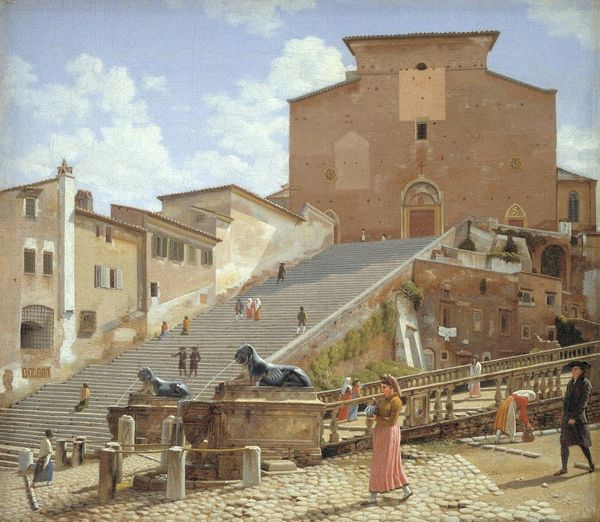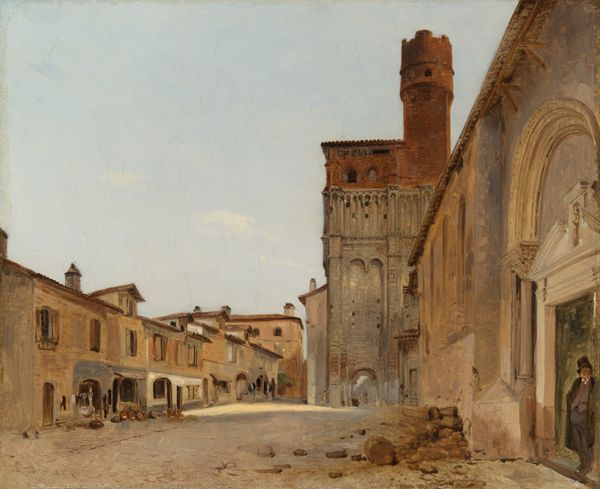
Norman city 1879
0:00
0:00
alexeybogolyubov
Rybinsk State Museum of History, Architecture and Fine Arts, Rybinsk, Russia
Dimensions: 70.1 x 90.9 cm
Copyright: Public domain
Curator: Looking at "Norman City," a painting from 1879 by Alexey Bogolyubov, I’m immediately struck by how brightly the day is rendered. It almost romanticizes the mundane. What do you think? Editor: There is indeed a sunny disposition to this painting. Its detailed architectural forms, with buildings closely framing the streets, and individuals frozen mid-stride conjure feelings of timelessness and stability. It's as if he tried to encapsulate the cultural memory that the city held, preserving its significance beyond mere physical structure. Curator: Preserving identity is essential; however, how does it play with ideas of 'realism', a popular trend that appears in the work. Are the subjects representative of some type, that speaks to common, shared experience? The faces are rather obscure. What do you make of this obscurity? Editor: Perhaps that obscurity reinforces a feeling of anonymity common to the growing urban experience. Bogolyubov is a complicated painter. While associated with the Peredvizhniki, he spent much time in France, so his realist depictions, as well as elements of plein-air painting, are always mediated through other aesthetic priorities. The human figures become part of the urban fabric rather than the central focus of attention. It serves to remind me how deeply ingrained architecture is in forming social routines. Curator: And Bogolyubov appears concerned about preserving it as a way to signal the importance of cities in a constantly shifting landscape during that time. This almost nostalgic leaning has ties to Romanticism as well. See how the towering church evokes this powerful impression on the everyday life occurring below? Editor: The architectural focal points certainly establish an inherent hierarchy, lending sacred weight and symbolic order to the activities taking place in public space. It gives those individual moments, seemingly casual or pedestrian, deeper resonances. Are we looking at the center of power? Or maybe a kind of eternal center found within the city's continuous rebuilding of collective life? Curator: This interpretation of power does reflect my sentiment. "Norman City", with its picturesque qualities, presents urban centers less as zones of alienation, but as repositories for memories and the perpetuation of traditions. Thank you for sharing this perspective. Editor: Thank you for underscoring how Bogolyubov interweaves political statement with Romanticist leanings and Realist elements! A perfect lens through which we see the intersection of architecture and urban life in painting during the period.
Comments
No comments
Be the first to comment and join the conversation on the ultimate creative platform.
